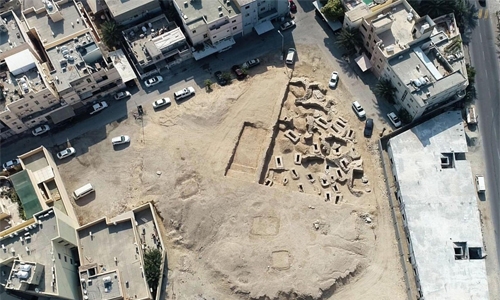Abu Saiba mound site key to understanding history of Tylos civilisation in Bahrain
TDT | Manama
The Daily Tribune – www.newsofbahrain.com
French archaeological mission head Dr Pierre Lombard has stressed the importance of the Abu Saiba site in understanding the history of the Tylos civilisation in Bahrain.
Dr Lombard said that the Tylos civilisation witnessed exceptional prosperity on the land of the Kingdom, thus forming an important cultural centre in the region and an extension of the previous Dilmun civilisation.
This came during his presentation on the topic as part of a series of lectures being held at the Bahrain National Museum.
The lecture was about excavation efforts in the Kingdom, organised by the Bahrain Authority for Culture and Antiquities (BACA).
It dealt with the recent archaeological discoveries in the Tylos tomb in the Abu Saiba area between 2017 and 2021.
Dr Lombard pointed out that the Tylos civilisation can be identified in general through the burials, explaining that the research project in Abu Saiba Mound 1 in the north of the Kingdom reveals important aspects of the history and story of that civilisation.
He noted that the hill appears in the form of a small circular shape with a maximum diameter of 70 metres, and its current height ranging between 4 metres and 4.5 metres.
Dr Lombard indicated that about 70 tombs built on the site have already been identified, and about 40 of them have been fully excavated and studied by a team that includes a scientist specialising in biological archaeology.
A sand mound covered with flat stones – a traditional sign of high social status – was found on many of these tombs, indicating the importance of the people buried at the site.
Dr Lombard said that these tombs were subjected to frequent, but not systematic, looting.
However, the burial offerings (pots, glass, jewellery and ornaments used in rituals) that remained intact indicate that the history of the site dates back to the period between the first centuries BC and the first century AD.
It confirms the peculiarity of customs and burial rituals during the Hellenistic period in Bahrain.
Dr Lombard added that the presence of a large number of Bronze Age pottery shards among the tombs is puzzling, and it is likely that it indicates the presence of a cemetery or a more ancient settlement under the site dating back to the late Dilmun period.
Dr Lombard added that the presence of a large number of Bronze Age pottery shards among the tombs is puzzling
Related Posts

